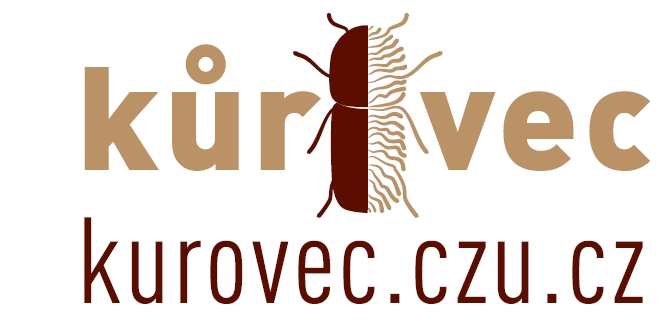Team members present the project at the ESA LPS19 in Milan. The presentation take place on Thuesday afternoon at the board A42, see graphical abstrakt below.
Abstract
As the biotic forest disturbances are an essential part of forests dynamics, the infestation of bark beetle decimates spruce forests for the last years not only in central Europe. Bark beetle (Ips typographus) plays an important role in the forests rejuvenation, hastens the decomposition of dead and dying wood, and may create early successional (snag) forest. Bark beetle attacks usually weakened trees, however, in case of its overabundance, attack also healthy trees. This status is called an outbreak and afflict central Europe for few last years. As sustainable resource management (e.g. maintaining tree species heterogeneity) is the most powerful way of defence, we need to make the massive prevention of bark beetle outbreaks. When the outbreak appears, selective and even square logging used to be applied. The most crucial step for reducing damages and losses is to find and clean up infected trees before the evolution of bark beetle generation is finished. Finding infected trees across the forest in quite demanding and time-consuming process even for a skilled forester. That is why the finding of solutions for the detection of infected trees using remote sensing techniques is still a current research topic.
The Czech Republic deals with outbreaks of the spruce bark beetle species due to many even-aged spruce forests. The aim of our study is to find a solution for detection of infected trees, which are in “green attack stage”, i.e. the trees are infected, but any visual sign appeared at the tree so far. This phase is the most important to be detected and trees identified for treating action. For early detection of infected trees across larger areas, Unmanned Aerial Vehicles (UAVs) equipped with proper sensors seems to be a cost-effective solution. In our study, we did a low altitude aerial survey using a consumer-grade RGB camera and a modified Near-Infrared RGB camera (NIR) in June, as well as the first and second half of August, and in October. Using an object-based image analysis and clear statistical analysis, we found predictors to compute for early detection of infected trees. Results show that even using low-cost (modified) cameras it is possible to detect early attack stage of bark beetle infection on an individual tree level. We conclude simple proportional vegetation indices that take advantages of red, green and near infra-red bands, as the best predictors at early stages of infection.

